Table of Contents
ToggleIntroduction
Most Flexible Animals encompass a fascinating spectrum of creatures with remarkable physical adaptability. Animal Flow is a fitness regimen crafted to enhance strength, mobility, and flexibility in individuals.
Drawing inspiration from the natural movements of animals, this workout encourages participants to emulate these motions for improved physical conditioning.
Related Posts :
Let’s understand Is Pura Safe for Cats?
Let’s understand Why Do Cats Like Straws?
Let’s Understand Why Does My Cat Get a Red Rocket When I Pet Him? 5 Facts
When delving into the study of animal flexibility, one might inquire about the most flexible creatures, with the octopus standing out as a highly flexible marine species. However, our focus here is on the flexibility of land animals.
This article will delve into the realm of flexible animals, examining the distinctive abilities their flexibility affords them and highlighting their uniqueness. Which animals top the charts in terms of flexibility? Let’s explore and discover.
Most Flexible Animals:
The Top 15 Most Flexible Animals are the following :
The Octopus
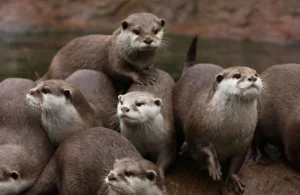
Most Flexible Animals undoubtedly include the octopus, acknowledged for its extraordinary flexibility. The University of Chicago conducted an extensive study on octopi, revealing their ability to bend, twist, stretch, shorten, and maneuver their eight soft limbs in various directions.
Considering these remarkable capabilities, the octopus stands out as arguably the most flexible creature in existence. It comes as no surprise that they claim the top spot on the list. However, it’s noteworthy that numerous other intriguing animals also showcase impressive flexibility!
Weasels

Most Flexible Animals extend beyond the aquatic realm, with weasels showcasing both cuteness and formidable flexibility. Often wrongly portrayed as blood-thirsty murderers, weasels possess a unique hunting strategy—they kill more prey than they can immediately consume and adeptly stash the surplus for later.
This has led to longstanding conflicts with farmers, especially due to weasels’ ability to slip into chicken coops, swiftly eliminating entire flocks and saving leftovers for future meals. Despite their adorable appearance, weasels are efficient hunters, particularly fond of small rodents and chickens.
Their exceptional flexibility, characterized by short, sturdy limbs and a long, flexible body and neck, enables them to chase down prey with agility, effortlessly navigating through tiny holes and small spaces, as reported by a-z-animals.com.
Millipedes
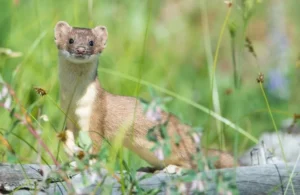
Among the Most Flexible Animals, millipedes stand out as fascinating invertebrates, distinct from insects. Varying in size from less than an inch to up to five inches, these creatures boast segmented, elongated bodies, endowing them with exceptional flexibility.
Each body segment supports two pairs of legs, contributing to their agile movements designed for self-protection.
When confronted with fear or threat, a millipede employs its remarkable flexibility by curling up into a tight coil, effectively shielding its soft undersides. Relying on the protective hard exoskeleton on its back, this defensive mechanism helps safeguard against potential harm.
Some millipedes possess an additional defense mechanism, emitting a toxic substance harmful to smaller animals. While generally non-threatening to humans, contact with the substance may cause skin irritation.
Interestingly, even in death, a millipede maintains its flexibility, as it curls up into a tight coil.
Owls
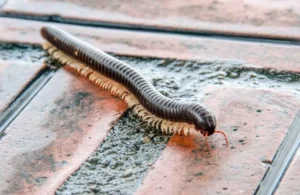
Among the Most Flexible Animals, owls exhibit a unique adaptation in their anatomy, particularly in their remarkable ability to rotate their heads.
Unlike many other birds, owls have fixed eyes, unable to turn, move, or roll them. However, in a fascinating twist, owls compensate for this limitation by showcasing incredible neck flexibility.
Related Posts :
Let’s Understand How To Keep Cats Away From Peace Lily? 10 Facts
Let’s Understand Top 15: Cat Sleeping Above My Head Meaning Spiritual
Let’s Understand Do Cats Get Horny? TOP 10 FACTS
Let’s understand Is Pura Safe for Cats?
Let’s understand Why Do Cats Like Straws?
Let’s Understand Why Does My Cat Get a Red Rocket When I Pet Him? 5 Facts
Astonishingly, they can rotate their heads up to 270 degrees to the left and 270 degrees to the right. Furthermore, owls possess the remarkable capability to turn their heads upside down without moving the rest of their bodies.
This remarkable flexibility is facilitated by enlarged blood vessels near the brain, ensuring uninterrupted blood flow during extreme head rotations.
Additionally, owls feature extra-large holes in their vertebrae, providing ample space for blood vessels and preventing any pinching or breakage when the owl executes its extraordinary head movements.
The Hero Shrew
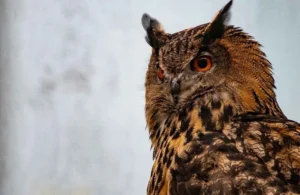
Exploring the realm of Most Flexible Animals, the hero shrew emerges as a distinctive creature under scrutiny by National Geographic, primarily for its remarkably robust and supple spine.
The hero shrew’s spine is believed to possess exceptional strength and flexibility, to the extent that it can endure being stepped on without breaking.
This extraordinary spinal adaptability is thought to aid hero shrews in prying apart palm leaves to uncover insects for their meals.
Characterized by tiny, fingerlike appendages, the spines of hero shrews contribute to their elongated and flexible structure. Remarkably, these appendages can interlock, fortifying the spine and rendering it exceptionally strong when needed.
Despite being challenging to study in their native environment due to their small size and timid nature, hero shrews remain a fascinating subject.
Their evolutionary journey remains somewhat elusive, but what is clear is their dual prowess in being both flexible and strong relative to their diminutive size.
Ferrets
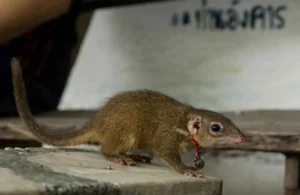
I always marveled at the agility of my friend’s pet ferrets, observing them roll, bend, twist, and stretch in mesmerizing ways.
They appeared as a perpetual ball of fluff, gracefully navigating intricate twists and turns. The question of how ferrets achieve such flexibility led me to discover insights from PetKeen.com.
According to PetKeen.com, ferrets possess spines that can elongate into long and thin structures, coupled with collapsible ribs.
Related Posts :
Let’s Understand How To Keep Cats Away From Peace Lily? 10 Facts
Let’s Understand Top 15: Cat Sleeping Above My Head Meaning Spiritual
Let’s Understand Do Cats Get Horny? TOP 10 FACTS
Let’s understand Is Pura Safe for Cats?
Let’s understand Why Do Cats Like Straws?
Let’s Understand Why Does My Cat Get a Red Rocket When I Pet Him? 5 Facts
This unique combination enables them to contort and bend in diverse ways, a trait finely tuned for their natural hunting prowess in navigating tiny tunnels at high speeds, especially when pursuing rabbits and rats.
The exceptional flexibility of ferrets allows them to execute fast U-turns even within tight and confined spaces, showcasing their remarkable agility.
For those intrigued by their flexibility, watching ferrets play or providing them with dedicated playgrounds can be a delightful way to witness their dynamic and acrobatic movements.
Rats
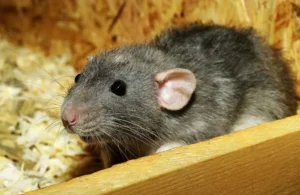
To effectively deter rats from entering your home or escaping from their enclosure, it’s crucial to address openings smaller than ½ by ½ inches. Holes exceeding this size may permit both juvenile and adult rats to maneuver through, posing a potential issue for containment.
Rats, recognized as one of the most flexible animals, possess long and cylindrical bodies, allowing them to navigate through minuscule holes and burrows. While highly flexible and agile, they lack collapsible skeletons, as highlighted by Ratbehavior.org.
Instead, their whiskers serve as a tactile guide, allowing them to gauge the dimensions of openings.
If their whiskers can fit, so can they! With this exceptional flexibility, rats can adeptly squeeze through cracks and crevices, underscoring the importance of securing your home to prevent unwanted rodent access.
Cats
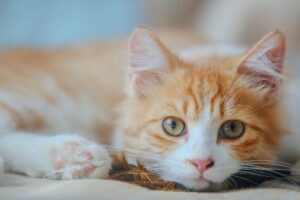
The internet is filled with an abundance of cat pictures, showcasing these feline companions in various poses – curled up in a ball, stretched out, and sleeping in amusing ways.
Cats, known for their incredible flexibility, never fail to provide entertaining moments captured in pictures.
Distinguishing cat skeletons from those of humans, felines possess a more rudimentary collarbone, enabling them to squeeze their shoulders into tighter spaces.
Their shoulder blades attach differently, and their spines exhibit a remarkable capacity for dramatic twists.
This exceptional flexibility empowers cats to execute flips, spins, twists, and impressive sprints of up to 30 mph, as they bend and flex their spine with agility.
Utilizing their whiskers as a tactile guide, cats navigate spaces by assessing their width. Rarely do they get stuck, thanks to their flexible spines, allowing them to expertly turn and maneuver their way back out of confined spaces.
The captivating flexibility of cats adds to the charm and allure that makes them internet sensations.
Earthworms
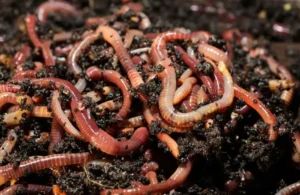
Gardeners appreciate earthworms for their significant contribution to soil health and nutrient enrichment.
These creatures are adept at burrowing through the soil due to their remarkable flexibility. As noted by asknature.org, earthworms possess a hydrostatic skeleton, essentially a flexible structure filled with fluid.
Each segment of the segmented worm operates independently, and the fluid within prevents the worm from being crushed by the soil it navigates.
Related Posts :
Let’s Understand How To Keep Cats Away From Peace Lily? 10 Facts
Let’s Understand Top 15: Cat Sleeping Above My Head Meaning Spiritual
Let’s Understand Do Cats Get Horny? TOP 10 FACTS
Let’s understand Is Pura Safe for Cats?
Let’s understand Why Do Cats Like Straws?
Let’s Understand Why Does My Cat Get a Red Rocket When I Pet Him? 5 Facts
The flexibility provided by this hydrostatic skeleton is instrumental in aiding earthworms in digesting decomposing organic matter.
Through this process, they leave behind valuable byproducts known as worm castings, highly prized by gardeners for their nutrient-rich qualities, serving as an excellent natural fertilizer.
Hedgehogs
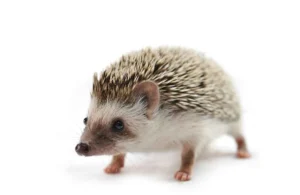
My hedgehog exhibited an impressive level of flexibility, especially when it came to exploring new foods. After chewing, he would skillfully turn his head and spit the food onto his back, showcasing his agility.
It was always delightful to introduce him to different treats just to witness his adorable stretches and bends as he turned his head towards his back. He truly was a flexible little companion!
In moments of fear, he demonstrated another aspect of his flexibility by tightly curling up into a tiny ball, emphasizing the remarkable flexibility of his back.
In a relaxed state, his spines laid flat, giving him a long and stretched-out appearance. However, when adopting a protective stance, his spine stood erect, presenting sharp points as a defense mechanism.
It became evident that hedgehogs utilize their inherent flexibility for self-protection.
Snakes
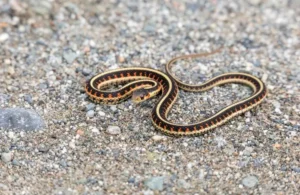
The mesmerizing flexibility of snakes is a spectacle we’ve all witnessed, observing their ability to bend, twist, and coil into various shapes. This remarkable flexibility stems from several unique features in their anatomy.
Primarily, snakes possess an elongated and flexible spine, a key contributor to their sinuous movements. What adds to the surprise is the presence of hundreds of flexible ribs extending along their spine to the tail, allowing for intricate bends and twists.
Equally astonishing is the flexibility of snakes’ jaws, as noted by DK Find Out. Their jaws are loosely hinged, enabling them to swallow prey significantly larger than their size.
The flexibility of their ribs plays a crucial role in this process, as they are not joined at the front like human ribs; instead, they remain open, providing the necessary room to stretch apart and accommodate their next meal.
It’s essential to appreciate the marvel of snake flexibility from a distance, as some snakes can pose potential dangers.
Otters
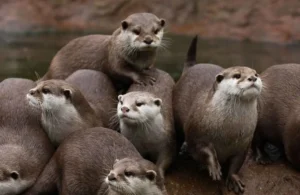
Otters, kin to weasels, share a comparable body structure characterized by long bodies, short legs, and dense fur. Beyond their undeniable cuteness, otters exhibit impressive flexibility that aids them in their aquatic pursuits.
With their long and powerful bodies, they showcase remarkable maneuverability in water, displaying the ability to make swift turns effortlessly.
As highlighted by the San Diego Zoo Wildlife Alliance, otters not only enjoy playing in the water but also revel in frolicking in the snow.
The agility of otters is further emphasized by their exceptional flexibility, allowing them to achieve a feat where they can touch their noses to their tails.
This flexibility contributes to their adeptness in navigating diverse environments, making them agile and playful creatures both in aquatic habitats and on land.
Elephants
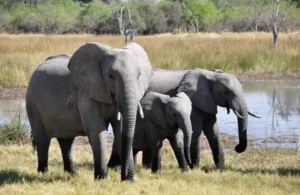
Despite common perceptions, large land animals can indeed be remarkably flexible, and the prime example is the elephant.
These colossal creatures boast incredibly flexible trunks, which serve as an extended upper lip and nose, fulfilling a myriad of functions.
The flexibility and strength of an elephant’s trunk are derived from the impressive arrangement of 100,000 tendons and muscles housed within it.
Related Posts :
Let’s Understand How To Keep Cats Away From Peace Lily? 10 Facts
Let’s Understand Top 15: Cat Sleeping Above My Head Meaning Spiritual
Let’s Understand Do Cats Get Horny? TOP 10 FACTS
Let’s understand Is Pura Safe for Cats?
Let’s understand Why Do Cats Like Straws?
Let’s Understand Why Does My Cat Get a Red Rocket When I Pet Him? 5 Facts
The multifunctional trunk is a versatile tool for elephants, allowing them to smell, reach high for food, drink, and even spray water on their backs.
Remarkably, elephants can utilize their trunks as a breathing apparatus underwater, functioning akin to a snorkel hose.
With the capacity to bend and twist in various directions, this muscular appendage showcases the surprising flexibility of the largest land animal, demonstrating adaptability in a range of activities.
Foxes

Foxes, often associated with craftiness, are not only intriguing for their intelligence and speed but also stand out as among the most flexible animals in the wild.
As reported by Mental Floss, foxes showcase remarkable agility, reaching speeds of up to 42 mph. What distinguishes them is their surprising flexibility, allowing them to effortlessly navigate through various environments.
This flexibility becomes apparent as they leap over fences, climb trees, and, notably, squeeze through tight spaces, including the openings in a chicken pen fence.
The adaptability and flexibility demonstrated by foxes position them as one of the most flexible animals, highlighting their versatility in movement and survival strategies.
Daniel Browning Smith
While not an actual animal, Daniel Browning Smith, a mammal, stands out as an incredibly flexible individual. Holding the Guinness Book of World Records for being the most flexible man, as reported by news18.com, he possesses the extraordinary ability to rotate his torso a full 180 degrees.
While the average person may not attain the level of flexibility demonstrated by Daniel, he serves as an exceptional example of the remarkable flexibility achievable by some humans.
Conclusion
In conclusion, the diverse examples provided highlight the astonishing flexibility found in various creatures, both in the animal kingdom and among humans.
From the acrobatics of snakes to the agility of otters, and even the exceptional contortionist skills demonstrated by Daniel Browning Smith, flexibility emerges as a common thread among species.
The keyword “most flexible animal” not only encompasses the physical prowess displayed by these creatures but also extends to individuals like Daniel who push the boundaries of human flexibility.
This exploration serves as a testament to the incredible adaptability and versatile capabilities inherent in both the natural world and our species.

Frequently Asked Questions
- What makes an animal most flexible?
- The flexibility of an animal is often attributed to its skeletal structure, muscles, and joints. Species with hydrostatic skeletons, well-developed muscles, and unique adaptations can exhibit exceptional flexibility.
- Which animals are known for their flexibility?
- Snakes, cats, foxes, otters, and elephants are examples of animals known for their remarkable flexibility. Each species showcases distinct adaptations that contribute to their agile and versatile movements.
- Can humans be as flexible as some animals?
- While humans may not match the flexibility of certain animals, some individuals, like contortionists or athletes, can achieve impressive feats of flexibility. The range of human flexibility varies among individuals based on genetics, training, and conditioning.
- How does flexibility benefit animals in the wild?
- Flexibility in animals serves various purposes, including efficient movement, hunting, self-defense, and environmental adaptation. It allows animals to navigate diverse terrains, catch prey, escape predators, and perform other essential survival activities.
- What role does flexibility play in the behavior of animals?
- Flexibility in animals often contributes to their behavioral repertoire. It enables them to engage in activities like hunting, climbing, swimming, and defensive maneuvers. The level of flexibility in an animal is intricately linked to its ecological niche and lifestyle.
- Are there dangers associated with excessive flexibility in animals?
- While flexibility is generally advantageous for animals, excessive flexibility due to genetic mutations or abnormalities may lead to health issues or challenges in certain movements. Natural selection often regulates the level of flexibility within a species.
- How do animals with hydrostatic skeletons demonstrate flexibility?
- Animals with hydrostatic skeletons, such as earthworms and certain invertebrates, use fluid-filled structures to achieve flexibility. The balance and movement of this fluid allow these animals to bend, twist, and contract their bodies effectively.
- Can flexibility be developed or enhanced in animals?
- Flexibility in animals is often influenced by genetics, but environmental factors, such as physical activity and diet, can play a role. Some animals may develop increased flexibility through regular movement and activities that engage their musculoskeletal system.
- What are the benefits of studying animal flexibility?
- Studying animal flexibility provides insights into evolutionary adaptations, biomechanics, and ecological interactions. It enhances our understanding of how different species have evolved to thrive in diverse environments and perform essential life functions.
- Is there a limit to how flexible animals can be?
- The degree of flexibility in animals is often constrained by their anatomical structure and evolutionary adaptations. While some species exhibit extraordinary flexibility, there are physical limits based on the biomechanics and functionality required for survival in their specific habitats.
